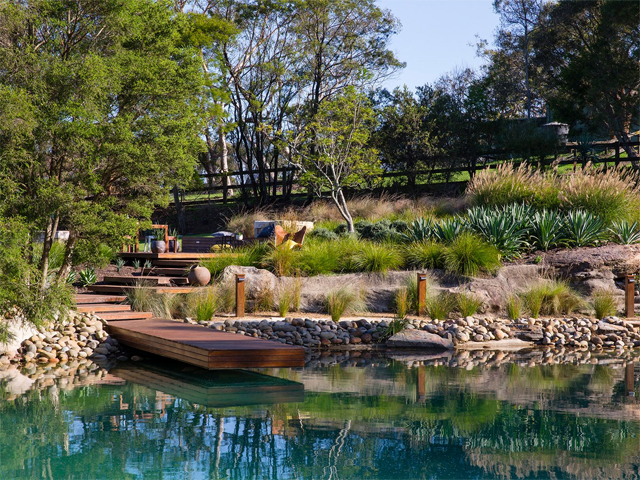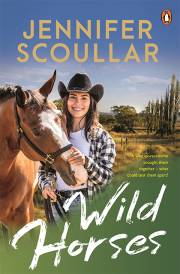Matt Leacy's Top Tips For Water-Wising Outdoor Spaces

As drought conditions continue across many parts of Australia and Sydneysiders enter their third month under Level 1 water restrictions, many property owners are contemplating water-wise options for outdoor spaces.
"Whether it's in the garden, pool or areas in between, there are plenty of ways to create beautiful and practical outdoor spaces – that are also low on maintenance and water requirements," says expert Landscape designer Matt Leacy, from Landart Landscapes.
"It's all about knowing what your options are and making smart choices. Water restrictions don't necessarily have to mean sacrificing outdoor style, aesthetic and use," says Leacy.
Below, Matt includes his top tips for year-round water-wise landscaping.
Water-wise plantings and lawns
"In drought or very dry periods, it's best to have plants that are hardy and can cope in sunny conditions with minimal water," Matt says.
"At the same time, you ideally want to select drought-resistant plants that are consistent with your intended garden style and aesthetic – and the soil you're working with," he explains.
"If you're a big fan of colour, you might opt for the likes of acacia ('wattles'), succulents, and Rhaphiolepis ('Apple Blossoms')," Matt says. "Succulents, in particular, are some of the most versatile water-wise choices. Carpobrotus, Senecio, Sempervivums, Crassula, Aloes and Sedums are all very unique and come in a variety of colours, textures, shapes and sizes."
"If your goal is to bring more structure into the garden, you might choose architectural plants like tree aloes, dragon trees, Nolina's, agaves or cactuses," Matt says.
"If you're looking to fill a large space with mass plantings, you might consider ornamental grasses and low-maintenance varieties like Lomandra, Echiums, Westringias, Casurinas and, again, succulents.
"In terms of native water-wise choices, some of my favourities include Correa alba ('white correra'), Leucophyta brownie ('Cushion Bush'), Adenanthos sericeus ('Woolly Bush') and Hibbertia scandens ('snake vine'), to name just a few."
"For the best type of water-wise lawn, you can't go past soft leaf Buffalo Grass, like Sapphire or Sir Walter" says Matt. "These cope better with less water compared to other types of grasses. They will brown if they go a long time without water, but they also bounce back pretty quick after rainfall. Make sure you fertilise Buffalo Grass, as well as aerate and irrigate it properly.
"In terms of watering Buffalo Grass, you're going to need to water in accordance with any restrictions that may exist in your state or territory," notes Matt. "For example, in Sydney and other parts of New South Wales, you're only allowed to water lawns or gardens with a hand-held hose before 10am and after 4pm – and the hose must be fixed with a trigger nozzle or another attachment that allows instant on-off use.
"There are a few exceptions to this, which you can check out at the Sydney Water website."
"In the warmer months when the grass is growing, I would always recommend giving your lawn at least two deep root soakings per week in the morning before 10am," Matt says. "You'll get much better results than, say, giving the lawn five light sprinklings over the course of a week."
Pool and spa covers
"A pool and/or spa cover will help to significantly reduce water evaporation, as well as insulating the pool and/or spa to naturally retain its temperature over the cooler months" he explains.
Drip Irrigation systems
"Drip irrigation systems remain one of the most efficient ways to get water into the garden, and they are permitted for use in all state and territories," says Matt.
"There are many types of drip irrigation systems on the market, which can be suited to different property sizes and budgets – the most simple of which are battery-operated systems," he explains.
"If you don't have a lot of time for garden maintenance, I'd recommend an automated drip irrigation system," Matt says. "These can be set with a timer to turn on and off automatically whenever you want them to. I'd suggest setting the timer to turn the system on early in the morning as this will reduce overall evaporation and give plants a solid kick-start to the day. Under the new water restrictions, all irrigation systems must have a rain gauge or soil moisture sensor"
"It's also worth noting that drip irrigation systems run underneath mulch, so it's best to install them before you begin the mulching process," adds Matt.
Mulching
"Mulching plays a huge part in boosting the water efficiency of any garden," says Matt. "Mulch helps to conserve moisture, as well as insulating the soil and reducing weeds – all of which is vital to the overall health and appearance of plants."
"As a general rule, it's best to mulch at least 50-70mm deep and to keep the mulch away from the stems of trunks or plants," Matt says. "And make sure you to follow the mulch application instructions properly as you can reduce the available water to the soil if you get the mulch and depth wrong."
"In terms of mulch varieties, this depends on the soil type and plants used – though generally a decomposed pine bark works well, though it will need topping up more regularly. It ultimately comes down to what your soil needs and what you are trying to achieve."
Co-founder of the award-winning Willoughby-based Landart Landscapes, Matt Leacy has more than 20 years' experience in design, construction and maintenance services across landscaping and pool installation for both residential and commercial properties.
Matt is a qualified structural landscaper, designer, horticulturalist and current board member – and former president – of the LNA Master Landscapers Association, which is the equivalent of the Master Builders Association for the landscaping industry.
Matt is a regular media commentator and column writer. He is the resident landscape guru on Channel 10's Logie Award-winning lifestyle program The Living Room, and previously co-hosted Channel Nine's Garden Gurus, three seasons of Domestic Blitz, as well as featuring on ABC TV's Dream Gardens and Channel 10's Studio 10.
Matt has also worked with City of Sydney, spearheading their Living Colour installations to bring life and colour to inner-city streets.
A selection of Matt's work can be found at www.landart.com.au
Photo Credit: Jason Busch
MORE



